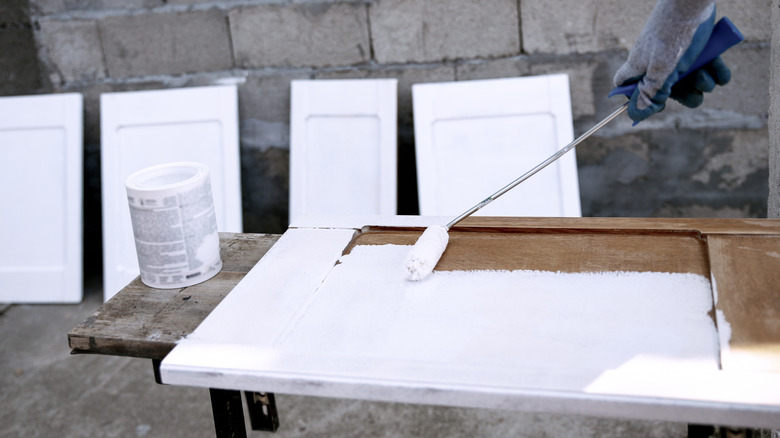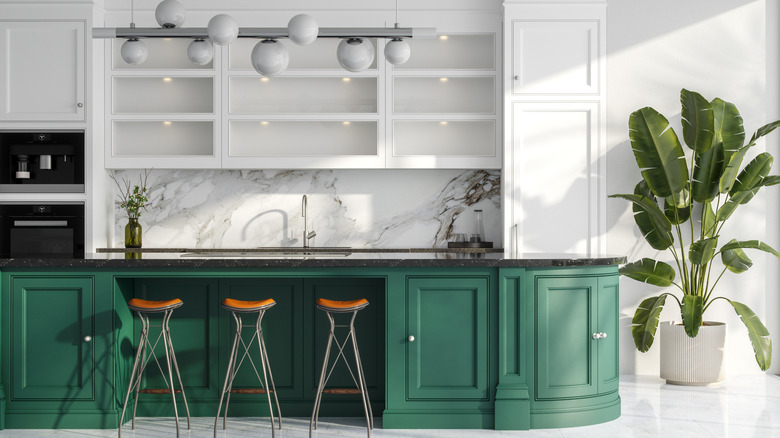Here's How Long You Should Wait Before Putting Your Cabinets Back After Painting
Patience isn't just a virtue — it's the key to ensuring your freshly painted cabinets stay flawless. If you're bringing your outdated wooden cabinets back in style, you're understandably excited and ready to see them in use. But before you start loading those cabinets with dishes or grabbing handles, it's crucial to understand how long it really takes paint to dry. While paint may feel dry to the touch in a few hours, full curing can take up to 30 days, depending on the type of paint and environmental conditions. Oil-based paints cure the fastest, often being fully hardened after seven days, while latex paints can take a full month to cure. This is why oil paint is commonly recommended for cabinets for durability.
Before rehanging doors or attaching hardware, give your cabinets a little breathing room. Ideally, you should be waiting a full 48 hours to allow your paint time to bond. Remember to be gentle with them for at least a week — jumping the gun could lead to scratches or chips, undoing all your hard work. So, take a deep breath, embrace the waiting game, and let time do its magic. Your patience will pay off with a durable, beautiful finish that lasts. So, paint your kitchen cabinets in a trending color with the confidence that you can keep them looking good for a long time!
Understanding the difference between curing and drying
Painting may seem straightforward, but there's a lot happening beneath the surface as it transitions from wet and workable to tough and durable. Paint starts in a liquid state. When air hits it, the solvent starts to evaporate, initiating the drying phase. When this process starts, your paint can feel dry when you touch it, but it's not fully cured yet. It continues to release additives and solvents for days until they're all gone, leading to full dryness, or curing. So, while your paint may seem ready for action after a few hours, the real magic happens as it fully cures, transforming into a durable finish built to last.
Fully cured paint goes from "handle with care" to "bring it on." At this point, your paint can survive everyday wear and tear, such as kids slamming cabinets, someone wiping it down with a rag, or dishes scraping across the surface. If you aren't sure if your paint is cured or not, you can try gently pressing your fingernail into it in an inconspicuous area to see if it leaves a mark — an indent is an indicator that the paint has not fully cured yet. Understanding these stages of drying and curing ensures you'll know exactly when your paint is ready to handle everyday life without a hitch!

